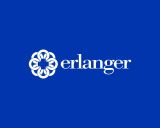If you prefer, you may communicate offline with the Blogger in Chief at
This Blog is to share Web resources for productivity and communications that may be of interest to those who work in healthcare.
The Health Education Assets Library (HEAL) is a digital library of multimedia teaching materials for the health sciences. This collection is substantial, with 22,000+ freely accessible “learning objects.” HEAL is funded by grants from the National Science Foundation, the National Library of Medicine, and the Spencer S. Eccles Health Sciences Library at the
The collection utilizes a schema of cataloging standards that is derived from the Instructional Management Systems (IMS) standard developed by Educause, a nonprofit association that promotes the intelligent use of information technology. HEAL uses a rigorous peer-review process, with reviewers who are physicians n bio-scientists, and experienced users of instructional technology. They systematically examine both the quality and usefulness of the submitted resources. Potential health sciences-related resources are rejected, accepted conditionally, or accepted as-is. Reviewers can also accept outstanding resources "with acclamation." In addition, HEAL is a leader in developing a process to provide academic recognition for digital scholarship. Upon acceptance, resources are permanently published in the HEAL Reviewed Collection.
HEAL also presents other collections in their affiliated collections. For example, you can explore the UCLA Interactive Neuroscience Collection. It contains multimedia resources to support first year neurosciences curricula and includes videos of brain dissections, a brain atlas, an MRI atlas, and interactive quizzes.
More information about HEAL, as well as free access to HEAL's Reviewed Collection and affiliate collections of health sciences educational resources, is available at http://www.healcentral.org.
Quizlet is a great example of a Web 2.0 application. It handles a relatively simple task using free, online software and also creates a community of common interests. This is not necessarily a tool that would be used every day, but it can definitely be useful in appropriate situations. Perhaps the greatest use for Quizlet would be with kids – it is a perfect application for school work.
Quizlet also supports groups that can create and share sets. There is a group for medical students that is collecting useful sets in one place - human anatomy, pathology, pharmacology etc. Thus, Quizlet supports medical students who desire to interact and study together. It is possible to create groups and sets that are private or even restricted to individuals, but much of the material is open to all.
This is a link to a Medical Diagnostic Procedures quiz set. This uses a “scatter” format where terms and definitions are all scattered on a blank page. Using your mouse, you drag the term onto its definition. If this is a correct match, then the term and definition vanish. The goal is to very quickly make all the terms and definitions go away. When this is accomplished, you get the timing and are encouraged to try again.
Quizlet is only 500 days old, but already has 8,551 registered users, 538,396 scores logged, 258,820 terms entered, 36,693 discussion messages sent, and 6,998 sets made. Perhaps the most remarkable thing is that this application was created by a fifteen-year old who was looking for a more interesting way to study French vocabulary. Well done!
